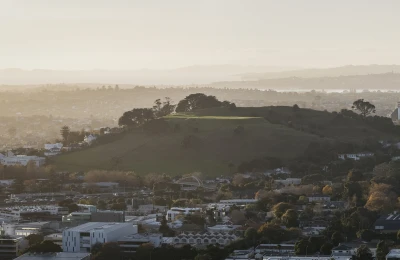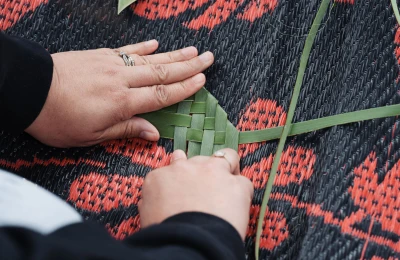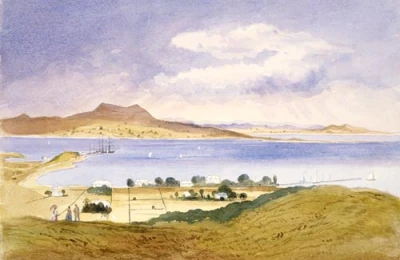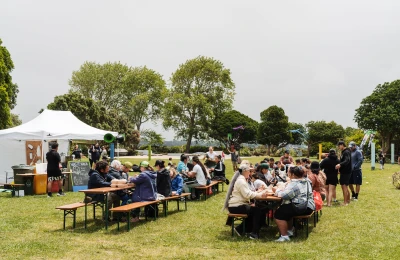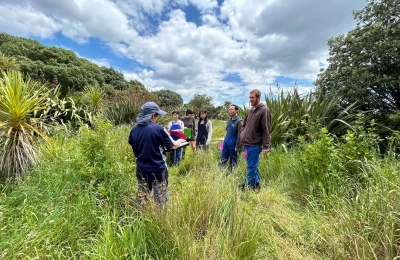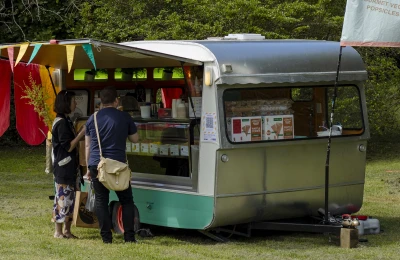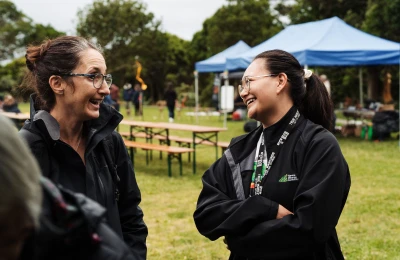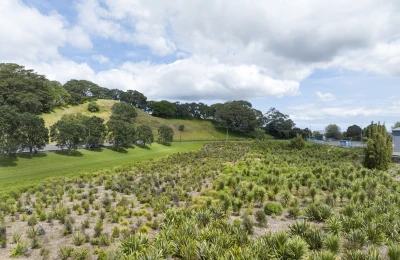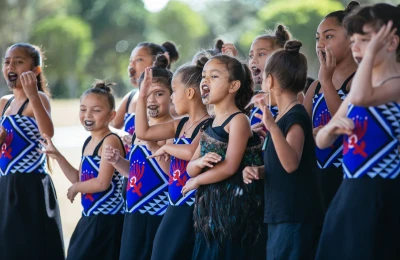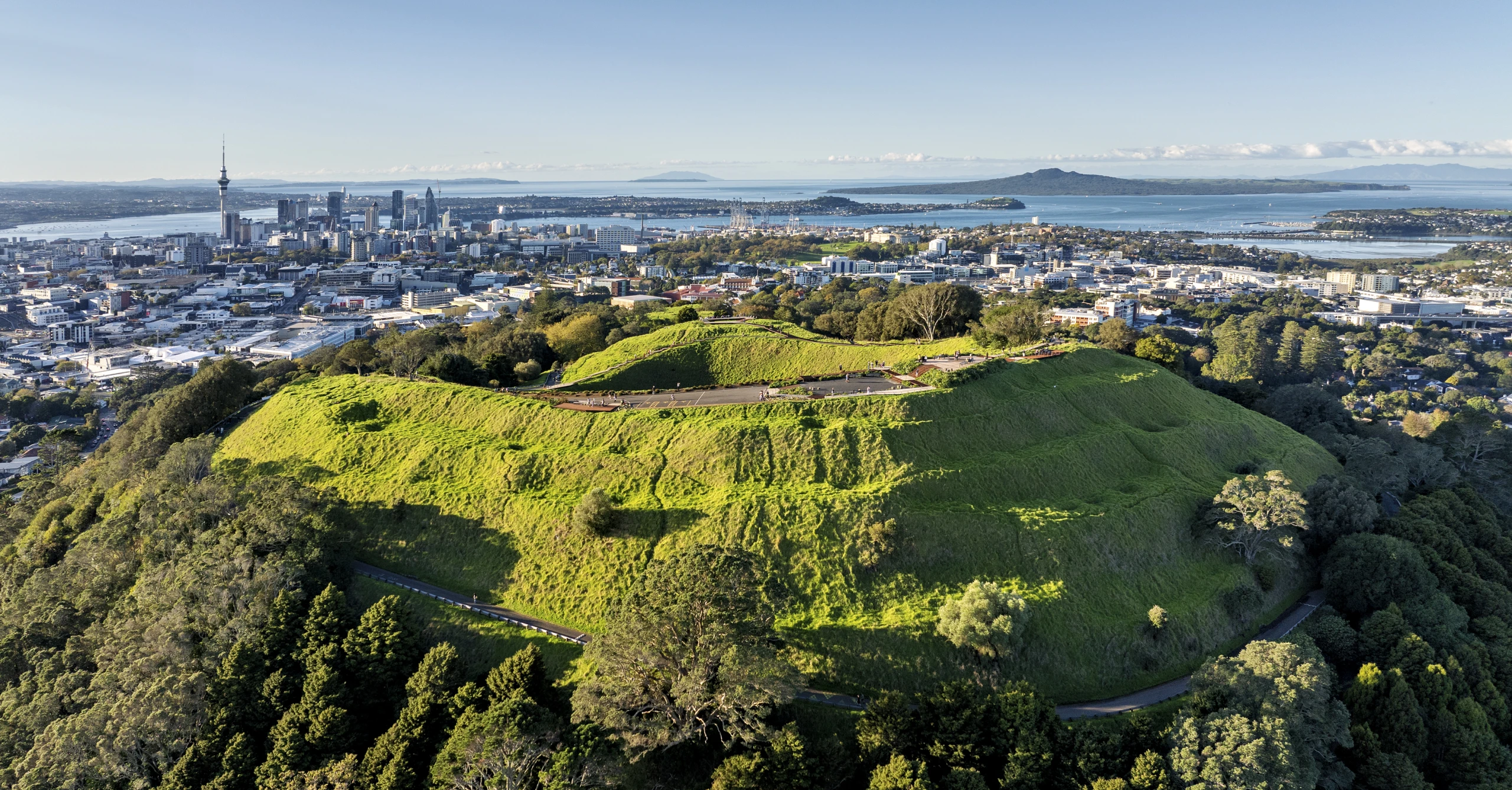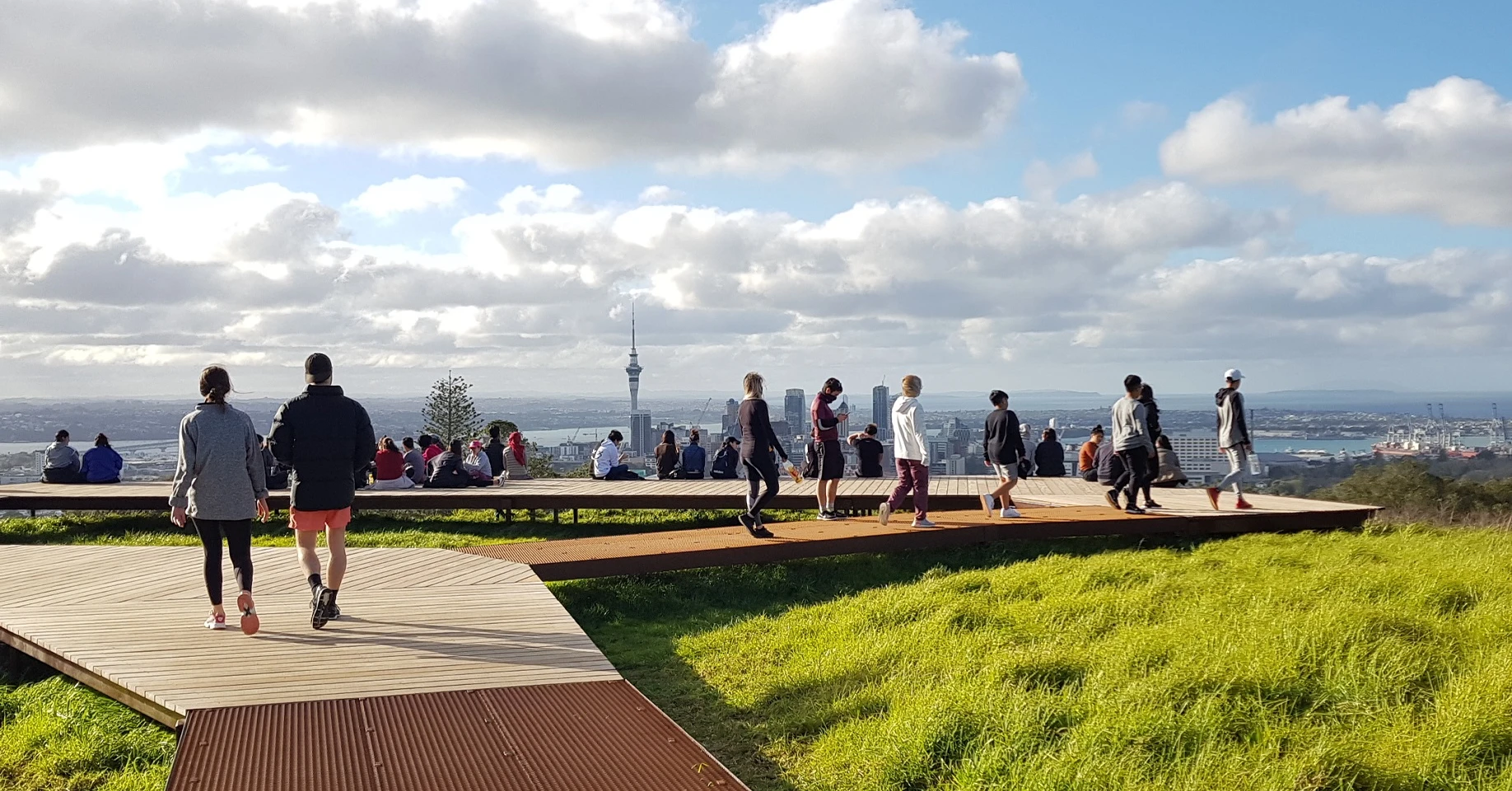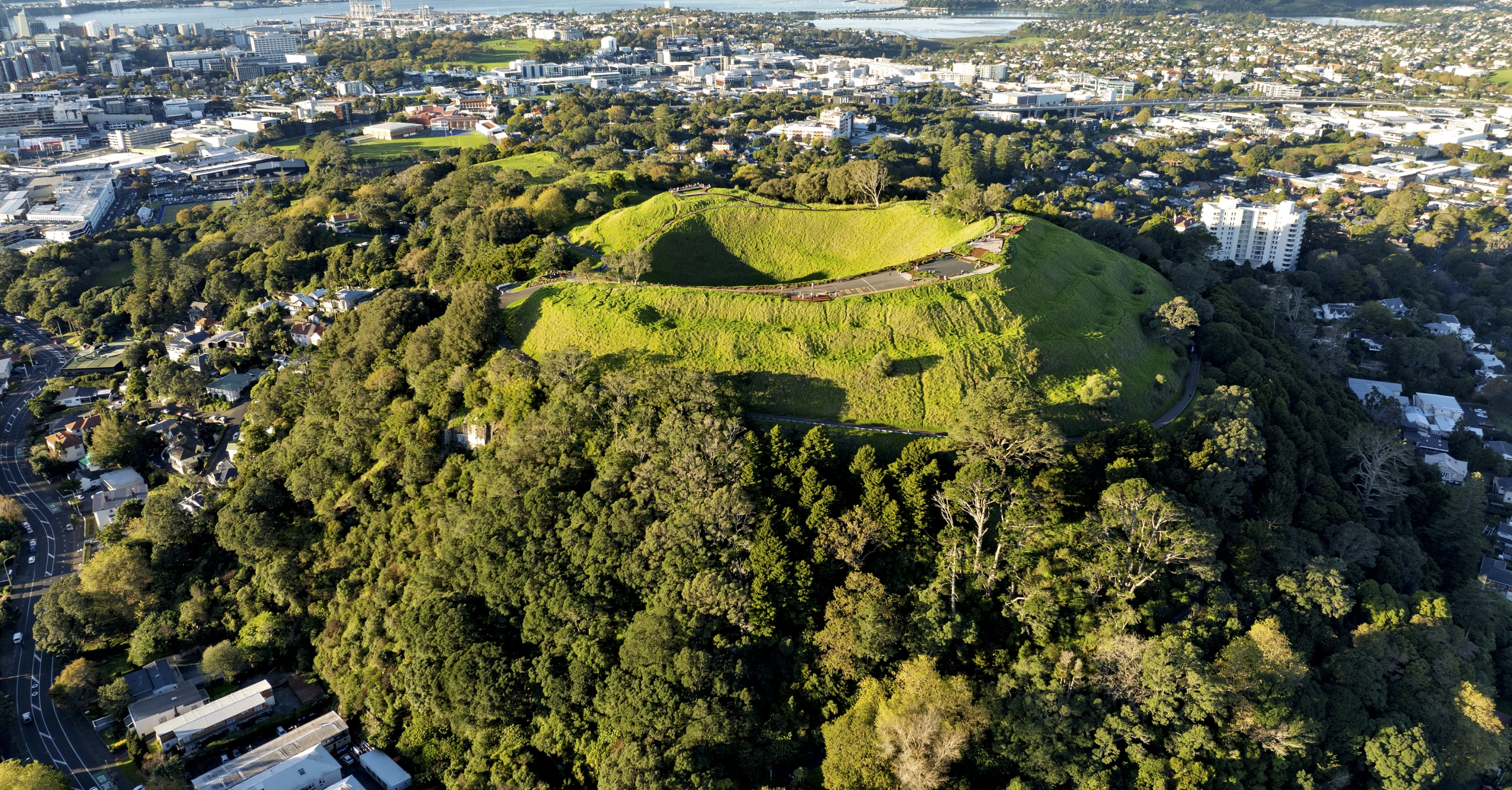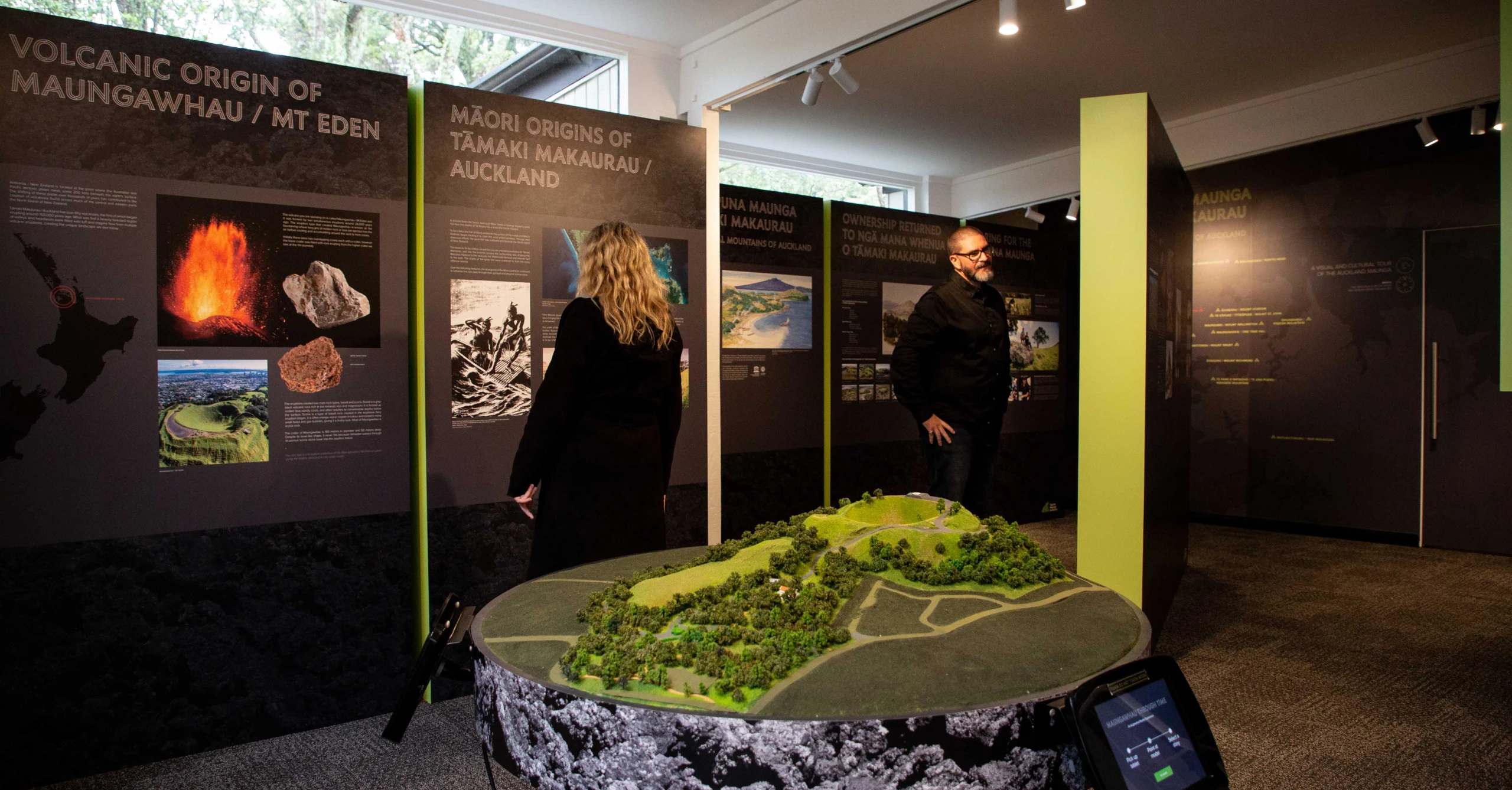PĀ
Maungawhau means ‘ hill of the whau tree’.
Like nearby Maungakiekie / One Tree Hill, Maungawhau was an enormous Māori pā - a citadel built for thousands of inhabitants.
Some of Maungawhau’s original pā earthworks have been lost or damaged by quarrying, and the construction of roads, parking areas and water reservoirs, but there is still much evidence of the former layout of the pā.
On the outer slopes there are numerous flat terraces used mainly for living and working space. Many pits for crop storage were dug on the terraces and around the crater rim. You can see some of these pits today as you walk around the crater rim track.
There was also a series of defended strongpoints on the highest crest of the Maunga, though there is no evidence of ditch or bank defences at Maungawhau, which is unusual for a highly defended mountain pā site.
The crater was known as Te Kapua kai a Mataaho - ‘the food bowl of Mataaho’, the deity responsible for volcanic activity.
GEOLOGY
At 196m tall, Maungawhau or Mount Eden is the highest volcano in Auckland.
Maungawhau is a large, elongated scoria cone consisting of two overlapping cones which erupted in close succession about 28,000 years ago. The older, lower northern cone had its crater filled with scoria ejected by second eruption. The southern cone is the youngest and tallest, with an impressive crater 180 meters in diameter and 50 meters deep.
When Maungawhau erupted, lava flowed out around the base of the cone and across the valley below in all directions. The earlier flows spread northeast to present-day Khyber Pass Rd and Newmarket, southwest to Balmoral Rd, and west around Gribblehirst Park in Morningside. Later flows were cooler and thicker, traveling a shorter distance and forming a steep-faced rock base around the maunga.
From the summit, you can enjoy spectacular views over the city, harbours and network of other maunga.
VEHICLE-FREE SUMMIT
To recognise the cultural, historic and archaeological significance of the Maunga, the summit road and the tihi (summit) at Maungawhau / Mt Eden was permanently closed to private motor vehicles, including motorbikes and scooters, in January 2016. It was the first Maunga to be returned to a pedestrian space under the Tūpuna Maunga Authority.
The widely supported outcome respects the spiritual and cultural significance of the tihi to Mana Whenua, as well as community aspirations.
BOARDWALK
Maungawhau, along with the other Tūpuna Maunga across Tāmaki Makaurau, is on a tentative list for UNESCO World Heritage status, and a major part of a bid is demonstrating that unique heritage values are being properly protected.
Maungawhau attracts over one million visitors per year (pre-COVID-19). Prior to the boardwalk there was significant rutting along dirt tracks and around the crater rim that contributed to the erosion of sensitive features.
Extensive planning for the boardwalk project included a review of sites around the world, such as the boardwalks at Yosemite National Park and the trails around Stonehenge. The boardwalk was designed to improve the visitor experience and aligned with our values to restore and protect the Maunga.
In June 2023 we opened the much-anticipated extension of the new tihi crater and rim boardwalk that includes access from the carpark and joins the award-winning boardwalk that was opened in August 2020.
The extension features a large ātea (gathering space), new platforms and seating that offer uninterrupted views of Tāmaki Makaurau from the harbours to the network of Tūpuna Maunga across Tāmaki Makaurau. There will be ongoing specialised native planting around each new feature leading to the tihi from the ponga wall to the rock garden. The new plantings attract, protect, and provide habitat for native species such as the kahukōwhai (yellow admiral butterfly) and mokomoko (skinks).
The boardwalk provides long overdue protection for the historic features that are the last remnants of the pā, built on the Maunga around 1200AD. Visitors can now appreciate these features without causing damage, as the boardwalk carefully winds through the tūāpapa (terraces) where the houses and gardens of the pā once sat, and the rua (pits) which were roofed for storing crops.
The boardwalks have been built with minimal disturbance to the landscape and all materials can be fully recycled at the end of their life. Materials will naturally weather over time and are permeable to the elements, allowing grass growth and ground stability beneath. Allowing the flow of air, water and light through the boardwalk also helps restore wairua (spirit) and mauri (life essence) of Maungawhau. The boardwalk follows the contours of Maunga to minimise the visual impact.
TE IPŪ KŌRERO AND CAFÉ
To learn more about the rich history of Maungawhau and Ngā Tūpuna Maunga o Tāmaki Makaurau, visit Te Ipu Kōrero o Maungawhau (education centre) in the kiosk. It features a short video and an interactive augmented reality model. Friend & Whau café is also based in the kiosk and offers delicious snacks and coffee at a mid-point on the Maunga.
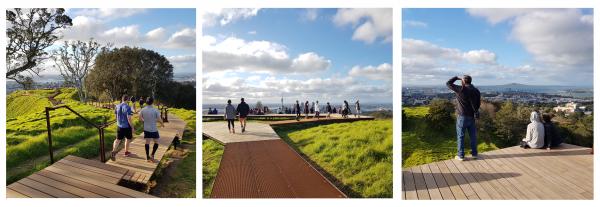
TOILETS
Public toilets are also to the right of the roundabout on Puhi Huia Road, beside the dedicated parking area for tour buses. There is also a toilet at Normanby Road playground.
PARKING
There are four visitor car parks at Maungawhau:
- to the left of the roundabout on Puhi Huia Road
- to the right of the roundabout, below the old Tea Kiosk building
- in Tahaki Reserve
- at the playground on Normanby Road
Parking time limits are enforced to give all visitors equal parking opportunity.
MAIN ENTRANCE GATE OPENING HOURS
Summer: 7 am – 8.30 pm
Winter: 7 am – 7 pm.
Times align to Daylight Savings.
DOG RULES
Under control ON leash
No dogs are allowed in the playground area.
OFF leash areas are:
- Fenced paddock by Clive Road carpark
- Fenced area in Tahaki Reserve
Please make sure to pick up after your dogs and dispose of waste in rubbish bins.
LOCATION
250 Mount Eden Road, Mount Eden, Auckland
